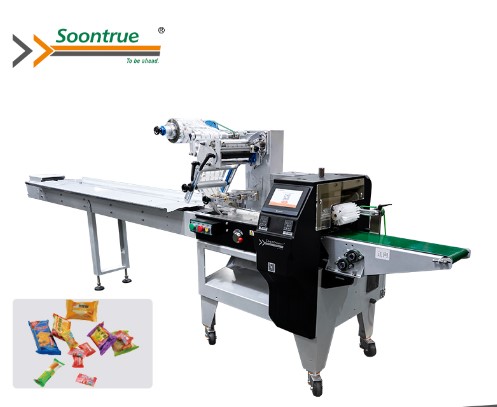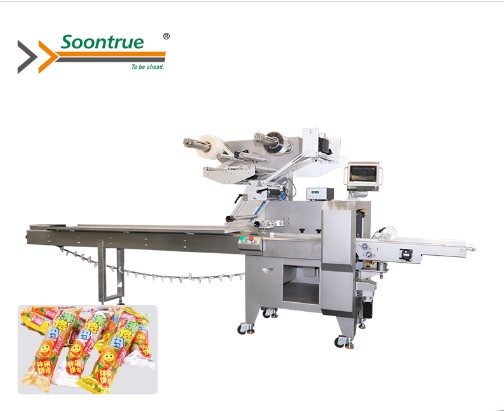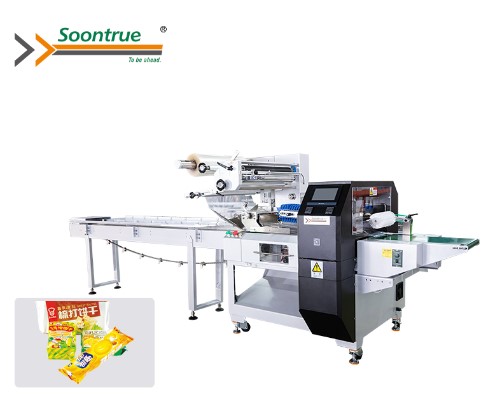Vacuum Vs Flow Packing Machine: What Is The Difference?
Two often used equipment in packaging technology are the flow packing machine and the vacuum packing machine. Each serves a unique purpose and is appropriate for a variety of products. This article aims to provide a comprehensive understanding of the differences between these two types of packing machines, their functionalities, and their applications.
Introduction To Packaging Machines
Packaging is a critical aspect of product distribution, affecting both the shelf life and the marketability of a product. As technology advances, the methods of packaging continue to evolve, leading to more efficient and specialized machines. Among these, flow packing and vacuum packing machines stand out for their distinct advantages in a variety of industries.
What Is A Flow Packing Machine?
A flow packing machine, also known as a horizontal form-fill-seal (HFFS) machine, is designed to package products in a continuous, efficient manner.It wraps the product in a plastic film, seals it, and then cuts it to the appropriate size. This sort of equipment is often used for packaging a wide range of products, including food items and consumer goods.
Key Components Of Flow Packing Machines
Film Roll: Holds the plastic film used for wrapping the product.
Forming Box: Shapes the film around the product.
Sealing Jaws: Seal the film around the product to ensure a tight package.
Cutting Mechanism: Cuts the sealed package to the required length.
How Flow Packing Machines Work?
Flow packing machines operate by continuously feeding products through the machine. The products are placed on a conveyor belt, and as they move forward, the film is wrapped around them. The forming box ensures the film is shaped correctly, and the sealing jaws close the package tightly. Finally, the cutting mechanism separates the packages.
What Is A Vacuum Packing Machine?
A vacuum packing machine, on the other hand, is designed to remove air from the package before sealing it.This procedure extends the shelf life of perishable food by minimizing the presence of oxygen, which can lead to deterioration. Vacuum packing machines are widely used in the food industry but are also applicable in other sectors where product preservation is crucial.
Key Components Of Vacuum Packing Machines
Vacuum Chamber: The area where the product is placed for air removal.
Sealing Bar: Seals the package after the air has been removed.
Vacuum Pump: Removes the air from the vacuum chamber.
Control Panel: Allows operators to set parameters such as vacuum time and sealing time.
How Vacuum Packing Machines Work?
In a vacuum packing machine, the product is placed inside a vacuum bag, which is then placed in the vacuum chamber.Using the vacuum pump, the equipment removes air from the chamber and bag. Once the air has been extracted, the sealing bar shuts the bag to prevent air from re-entering. This process effectively preserves the product by reducing the presence of.
Key Differences Between Flow Packing And Vacuum Packing Machines
Purpose And Functionality
Flow Packing Machines: Designed for high-speed packaging of solid products, providing protection and aesthetic appeal.
Vacuum Packing Machines: Focus on extending the shelf life of perishable products by removing air and creating a vacuum seal.
Packaging Process
Flow Packing: Involves wrapping products in a film, sealing, and cutting them into individual packages.
Vacuum Packing: Involves placing products in a vacuum bag, removing air, and sealing the bag.
Applications
Flow Packing:Suitable for a wide range of solid products, including food and non-food items.
Vacuum Packing: Primarily used for perishable food items and products that benefit from reduced oxygen exposure.
Benefits
Flow Packing:High-speed packaging, versatility, airtight protection, and aesthetic appeal.
Vacuum Packing: Extended shelf life, preservation of quality, space-saving, and protection from environmental factors.
Conclusion
Both flow packing and vacuum packing machines play important roles in the packaging business, with each providing distinct benefits customized to individual requirements. Understanding the differences between these two technologies can help businesses choose the right packaging solution to meet their product requirements and enhance their operational efficiency. Choosing a reliable flow packing machine manufacturer is also important. If you are looking for a trusted flow packing machine supplier, Soontrue is a good choice for you.





